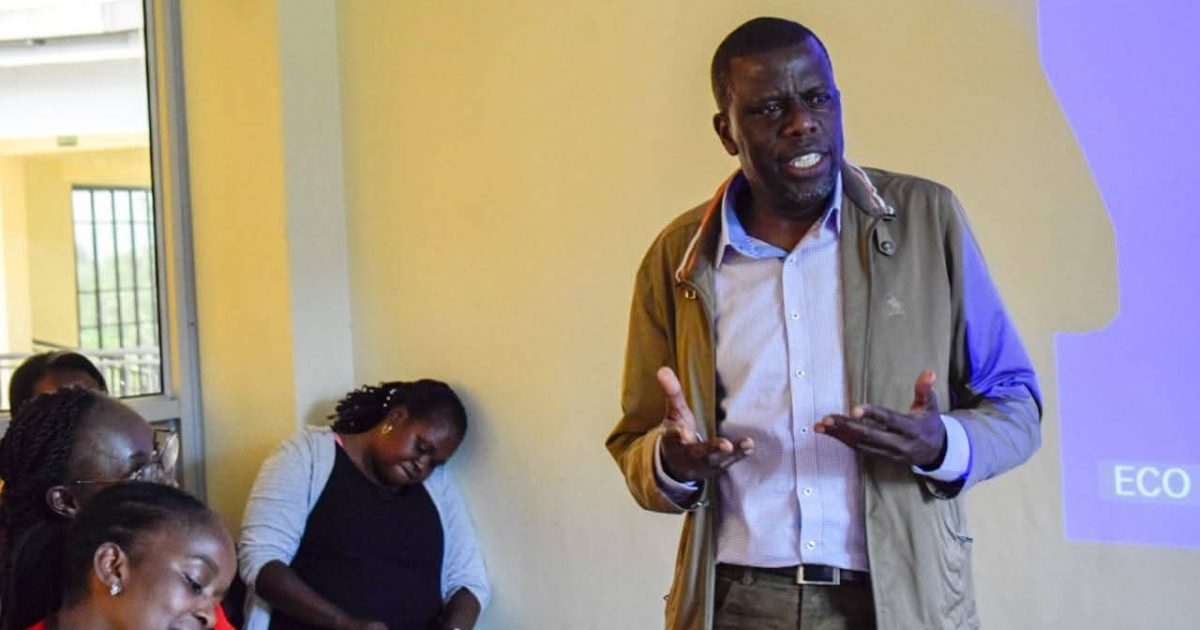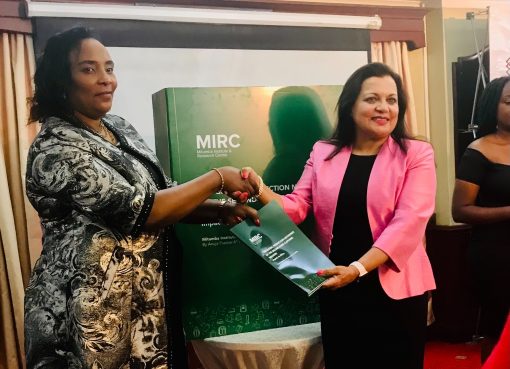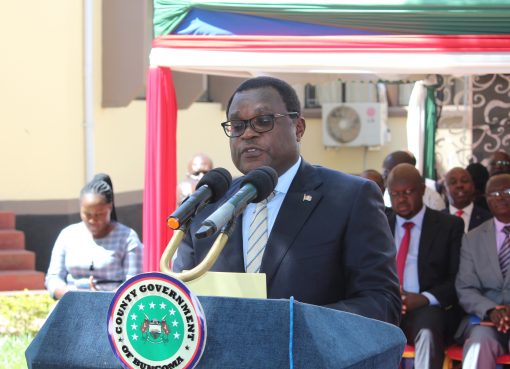Two years ago, numerous families in Nakuru County bore the brunt of tuberculosis (TB) as the devolved unit recorded an all-time high of 678 new TB cases, including over 20 cases of drug-resistant TB, which are significantly more difficult and expensive to treat.
It was established that at least one in four patients at the time diagnosed with the disease were also living with HIV, complicating treatment and increasing the risk of poor outcomes.
Despite attaining a remarkable 87 percent treatment success rate, the county found itself grappling with unforeseen challenges in the battle against the disease with patients defaulting treatment midway, delayed diagnosis and a TB-related mortality rate that then stood at 7.57 percent.
These gaps highlighted the urgent need for stronger patient follow-up, faster decision-making, and care that reaches closer to where people live.
It is against this backdrop that the County Government shifted its attention to data-driven approaches in tackling TB, prioritizing evidence-based interventions, from contact tracing to accurate diagnosis and timely treatment.
Two years down the line County TB and Leprosy Coordinator Dr. Judy Neimah Barasa said the gamble is paying off as the devolved unit has adopted simplified digital platforms that have replaced fragmented paper-based systems with a unified, real-time data solution.
Dr. Barasa, a pulmonologist, indicated that the system has enhanced contact invitation and tracing which remain a critical component in TB control, identifying individuals exposed to infectious TB cases (index cases), screening them for infection or disease, and providing appropriate medical interventions.
“This targeted strategy not only prevents further transmission but also ensures early treatment for undiagnosed cases,” stated the coordinator.
She made the remarks during a strategic meeting with Sub-County TB Coordinators, representatives from AMREF Health Africa and World Vision Kenya to launch the Global Fund TB Grant Cycle 7 (C7) in Nakuru County.
“The Global Fund TB Grant C7, which will be implemented by World Vision Kenya and AMREF Health Africa, marks a significant step forward in enhancing the county’s capacity to prevent, detect, and treat tuberculosis.
The initiative aims to strengthen community TB control efforts through improved coordination, resource mobilization, and community-level interventions,” added Dr. Barasa.
She indicated that with the digital platforms, health workers gained immediate access to patient records, automated SMS follow-up tools, and integrated reporting from Community Health Promoters (CHPs).
The result was a faster, more coordinated TB response that improved both facility-level and community-level service delivery.
Just twelve months after adopting the system 3,342 TB patients were reached, TB screening improved by 36 percent, and the uptake of TB Preventive Therapy (TPT) rose by 40 percent.
More than 40 healthcare workers were retrained and equipped to manage digital workflows, resulting in increased overall efficiency and accountability across 20 healthcare facilities.
Health facilities were also aligned more closely with county-level initiatives, such as the 100-Day Defaulter and Contact Tracing Campaign, which improved case detection and reduced loss to follow-up.
“The platform has greatly improved early detection and timely treatment for drug-resistant TB cases. It has empowered our teams to provide more targeted mentorship and make quicker decisions using real-time data,” Dr Barasa said.
“We’ve seen a complete turnaround in how we manage TB screening and reporting. What used to take several days now takes minutes, and most importantly, our patients are returning for care and completing treatment.”
Routine TB drug resistance surveillance and drug-susceptibility testing (DST) are critical to combat the global TB epidemic. DST helps determine appropriate TB treatment regimes.
With around 130,000 new cases each year, Tuberculosis remains a significant health concern in Kenya. Among these, 50,000 are also HIV-positive, making the disease even more fatal.
TB alone accounts for 4 per cent of all deaths in the country, cementing its status as a public health crisis. Automated technology improves TB screening, diagnosis, treatment in Nakuru County.
Adoption of automated technology in the fight against tuberculosis (TB) has also enabled easier and faster screening, diagnosis and treatment of the disease in Nakuru County thereby reducing further community transmission of TB.
The advanced technology, which includes a digital Artificial Intelligence-enabled X-ray machine, GeneXpert Machines and TrueNat point-of-care nucleic acid amplification test equipment aims to enhance the precision and efficiency of TB diagnosis in the county, facilitating appropriate treatment.
While noting that up to 50 percent of people with TB do not have the classical symptoms of the disease, the County TB, Leprosy and Lung Disease Coordinator noted that the only way they will be diagnosed early and before they have symptoms is through new advanced technologies.
She said that the devolved unit has made significant strides in TB management, with 637 health facilities spread across the county out of which 250 are TB treatment sites, with 102 diagnostic sites.
Dr. Barasa disclosed that Nakuru now has in place eight TB sample referral sites equipped with advanced technology, including one digital Artificial Intelligence-enabled X-ray machine, seven GeneXpert machines and one TrueNat point-of-care nucleic acid amplification test equipment.
Acting Director for Public Health, Mr Gerald Maina said the partnership with World Vision Kenya and AMREF is expected to accelerate progress toward ending TB in Nakuru County by building stronger community linkages and health systems.
He noted that last year the Nakuru County Teaching and Referral Hospital (NCTRH) was among eight facilities nationwide that initiated the programme of Digital Chest X-ray (DCXR) with AI, introducing the new diagnostic tools in accordance with World Health Organization recommendations under the TB Programme supported by USAID through the STOP TB Partnership.
Maina expressed optimism that with the new tools they are edging towards finding the 40 per cent of missing cases thereby reducing further community transmission of TB.
Four years ago, the World Health Organization (WHO) endorsed the rapid molecular test TrueNat.
TrueNat, which is more advanced in testing, is a chip-based molecular test for TB which is battery-powered to operate in peripheral laboratories and can generate results in one hour.
The Acting Director indicated that in addition to fast detection of tuberculosis, it can detect resistance to Rifampicin in an additional one hour, meaning that if a patient is detected to have this strain that is resistant to Rifampicin, they will be put on the right medication without delay.
“TrueNat point-of-care nucleic acid amplification test, which is a portable digital Chest X-ray equipment, has improved access to TB testing for patients with signs and symptoms of TB, especially in hard-to-reach areas where sample referral systems are unavailable or not properly constituted. It has a short test turnaround time reducing overall test turnaround time and time to TB treatment,” he pointed out.
GeneXpert diagnostics have become the gold standard for TB testing, particularly for drug-resistant TB (DR TB), which is difficult to diagnose through the traditional sputum smear technologies or chest X-rays.
GeneXpert can also rapidly detect rifampicin-resistant TB (a proxy for DR-TB diagnosis) along with drug-susceptible TB. But the diagnostic machines need electricity and are expensive to operate.
Maina pointed out that back in the day when health care facilities used to rely on the old x-ray machines and other methods, so many TB cases would be missed, and also it would take many days before getting the results.
The digital Artificial Intelligence-enabled X-ray machine at the NCTRH was acquired through support from the National TB Programme, the African Medical Research Foundation and Qure.ai, an AI solutions provider.
The technology provides automated interpretation of radiology exams like X-rays, CTs and ultrasound scans, enabling faster diagnosis and speedier treatment of the disease.
Kenya is ranked fourth in Africa with the highest TB burden after South Africa, Nigeria and Ethiopia. In 2020, Kenya recorded 72,943 TB cases, 5,663 of these were paediatric cases translating to eight out of every ten infections.
According to Kenya Demographic Survey 2022, 12,000 people are infected with TB every year, while 32,000 die annually. Deaths reported were 21,000, a reduction from 31,000 in 2019.
By Jane Ngugi




